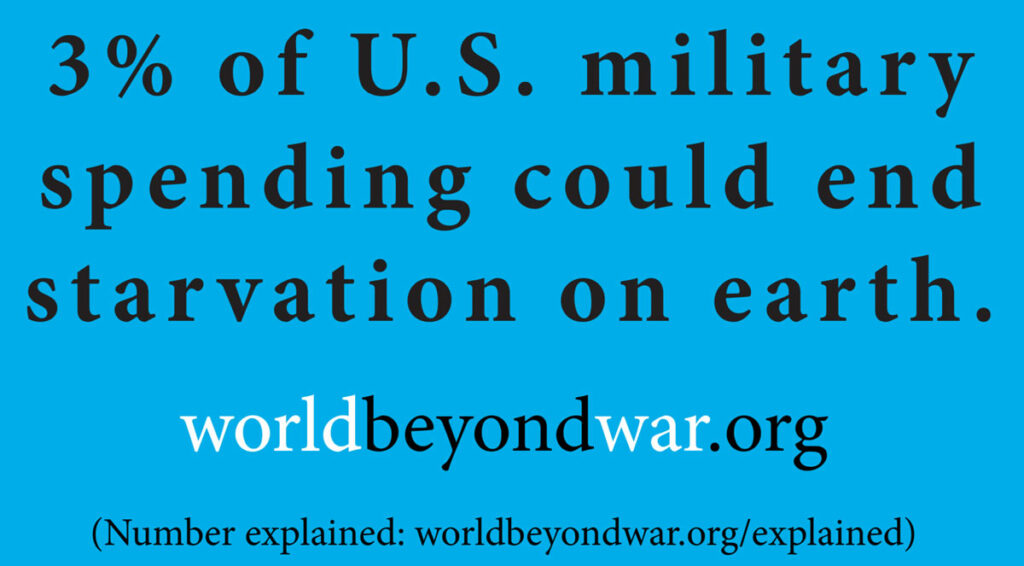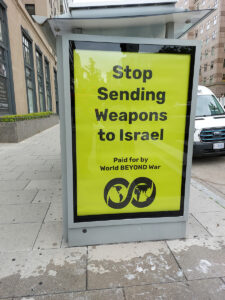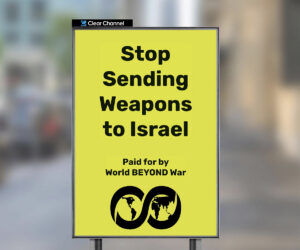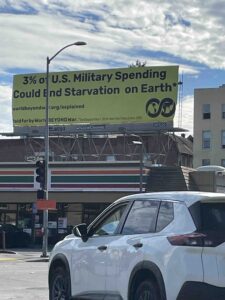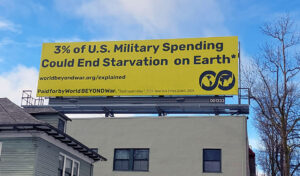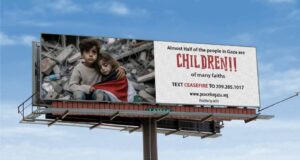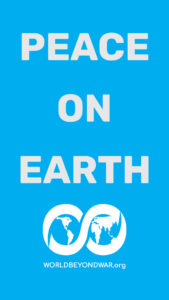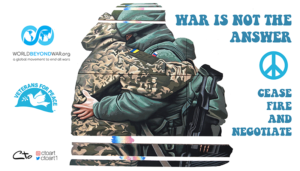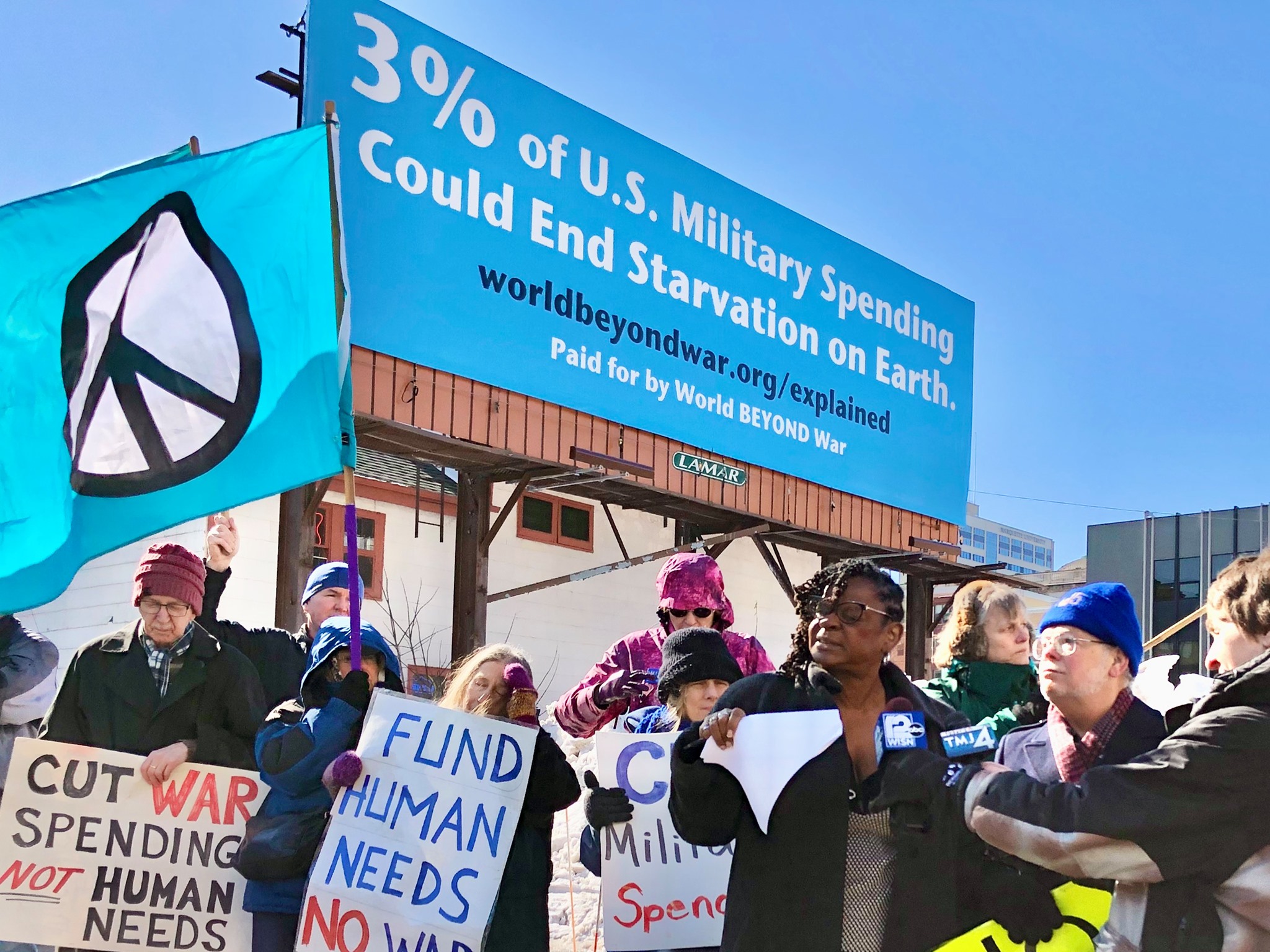
World BEYOND War raises funds to — independently and in coalition with others — put up pro-peace and anti-war billboards all over the world.
- In May 2024, we put up bus stop ads in Washington, D.C.
- In January and February 2024, our affiliate Arkansas Coalition for Peace and Justice put up a billboard in Arkansas.
- In January and February 2024, we are putting up six billboards in California.
- In November and December 2022, we put up big ads in the Metro train system in Washington, D.C.
- In October 2022, we put up a billboard in California.
- In September 2022, we put a mobile billboard in Washington, D.C.
- In July 2022, we put up a billboard in Montenegro.
- In September 2021, we put up new billboards in Germany.
- In May 2021, we had New Billboards in Germany and Ads in Canada Take on Nukes and Lockheed Martin.
- In January-February 2021, we had billboards go up in Berlin, Germany, and around Puget Sound in Washington State, U.S.
- In November 2020, thanks to a generous donation from School Sisters of Notre Dame Central Pacific Province, a billboard went up in St. Louis.
- In February and again August 2020, a billboard was up in Milwaukee, Wisconsin.
- In September 2019, four billboards went up in Limerick, Ireland.
- In March 2019, ads went up on buses in Alaska thanks to Alaska Peace Center.
- In February 2019, we began running video ads on Facebook.
- All over Lansing, Michigan, in December 2018 – January 2019 and ongoing, thanks to Peace Education Center.
- In Schenectady, NY, in January 2019, thanks to Upper Hudson Peace Action.
- In Pittburgh, PA, in December 2018 thanks to WILPF Pittsburgh.
- In Albany and Schenectady, NY, in September, 2018, thanks to Women Against War.
- In New York City thanks to the Puffin Foundation, huge billboards at 11th Ave and 49th St August 21 to Oct. 28, 2018, and 11th Ave and 45th St August 21 to Nov. 25, 2018.
- From week of Aug. 27 to week of Sept. 23, 2018, two ads in each of these Toronto subway stations: Dundas, St George Bloor-Danforth, St. George Yonge Line, and Queen.
- In July-August 2018 in Toronto, Canada, in dozens of subway trains.
- In July 2018 on bus shelters near White House in Washington, D.C.
- In April and May 2018 big billboards in Albany, New York, USA.
- Through March – July 2018, on stationary and moving billboards all over Syracuse, New York, USA.
- For the month of January 2018 a billboard in downtown Baltimore, Maryland, USA.
- For the month of December 2017 a billboard in Charlottesville, Virginia, USA.
We design new billboards all the time. Here are some popular designs.
In 2008, the United Nations said that $30 billion per year could end hunger on earth, as reported in the New York Times, Los Angeles Times, and many other outlets. The Food and Agriculture Organization of the United Nations tells us that number is still up to date.
As of 2019, the annual Pentagon base budget, plus war budget, plus nuclear weapons in the Department of Energy, plus the Department of Homeland Security, and other military spending totaled well over $1 trillion, in fact $1.25 trillion. Three percent of a trillion is 30 billion.
Global military spending is $1.8 trillion, as calculated by the Stockholm International Peace Research Institute, which only includes $649 billion of U.S. military spending as of 2018, making the actual global total well over $2 trillion. One-and-a-half percent of 2 trillion is 30 billion. Every nation on earth that has a military can be asked to move its share to alleviate hunger.
The Math
3% x $1 trillion = $30 billion
1.5% x $2 trillion = $30 billion
Doesn’t the UN FAO say that $265 billion is needed to end hunger, not $30 billion?
No, it does not. In a 2015 report, the UN FAO estimated that $265 billion per year for 15 years would be necessary to permanently eliminate extreme poverty — a much broader project than just preventing starvation one year at a time. The FAO’s spokesperson explained in an email to World BEYOND War: “It would be incorrect to compare the two figures [$30 billion a year to end hunger vs. $265 billion over 15 years] as the 265 billion has been calculated taking into consideration a number of initiatives including social protection cash transfers aimed at extracting people from extreme poverty and not just hunger.”
The U.S. government already spends $42 billion per year on aid. Why should it spend another $30 billion?
As a percentage of gross national income or per capita, the U.S. gives much less aid than other countries do. Plus, 40 percent of current U.S. “aid” is not actually aid in any ordinary sense; it’s deadly weapons (or money with which to buy deadly weapons from U.S. companies). In addition, U.S. aid is not targeted based purely on need but based largely on military interests. The biggest recipients are Afghanistan, Israel, Egypt, and Iraq, places the United States deems most in need of weapons, not places an independent institution deems most in need of food or other aid.
Individuals in the U.S. already give private charitable donations at high rates. Why do we need the U.S. government to provide aid?
Because children are starving to death in a world awash in wealth. There is no evidence that private charity decreases when public charity increases, but there is lots of evidence that private charity is not all it’s cracked up to be. Most U.S. charity goes to religious and educational institutions within the United States, and only a third goes to the poor. Only a small fraction goes abroad, only 5% to assist the poor abroad, only a fraction of that toward ending starvation, and much of that lost to overhead. The tax deduction for charitable giving in the United States appears to enrich the rich. Some choose to count “remittances,” that is money sent home by migrants living and working in the United States, or the investment of any U.S. money abroad for any purpose, as foreign aid. But there is simply no reason that private charity, no matter what you believe it to consist of, could not remain the same or increase if U.S. public aid were brought closer to the level of international norms.
World Beyond War billboards are funded entirely by contributions made here by supporters of ending war.
See lots of designs here.
We can put up more, and you can tell us where you want to see which ones, if you fund them.
Read about the 3 Percent Plan to End Starvation.
Here is our guide to using billboards to generate media, membership, and activism. Here’s a related power point / PDF.




